Quinta da Boavista does indeed have a spectacular view along the Douro, and now, more than ever, it has fantastic prospects for the future. Owned for much of its history by the firm of Offley Forrester and closely associated with the legendary Joseph James Forrester who used the quinta as his base when travelling and working in the Douro, Boavista is now in the hands of partners Marcelo Lima and Tony Smith whose work restoring Quinta de Covela has caught the attention of both the wine and business press in Portugal and abroad. Their plans for Quinta da Boavista and its wines promise to do full justice to this extraordinary property.
Located just 5 km downriver from Pinhão on the northern bank of the river, the quinta is spread over the two sides of a steep narrow valley which runs south by southeast down to the water’s edge, so has excellent exposure to the sun throughout the day. The altitude of the vineyards runs from 75 metres near the river up to 325 metres.
The western side of the valley is particularly steep, and in the later 19th century when two of Forrester’s sons were responsible for the firm of Offley Forrester, the terraces on this side were re-built to create broader planting areas for multiple rows of vines. To do this, however, they had to build extraordinarily high stone retaining walls, up to 9 or 10 metres in places, all hand made dry stone walls of schist. This parcel is now known as the Oratório.
On the eastern side of the valley the terraces are narrower and not so tall, though all stone-walled. Those higher up the hill and nearest the river are planted in vines, those below the house are planted in olive trees. Further back along the valley are several hectares of walled vineyard which were never replanted after phylloxera, an example of the abandoned mortórios that you see throughout the Douro.
Between the narrow shape of the valley, the quantity of schist in both the soil and the stone walls, and the southern exposure, Quinta da Boavista has a microclimate several degrees warmer than many of its neighbours, and is among the earliest to begin harvest.
The quinta buildings are clustered on a shelf partway up the eastern hillside, overlooking the river. The original group of buildings comprise the casa do Barão – the Baron's house – (on the far right and a bit in front of the other buildings in the photo below), the old adega with six stone lagares on the upper level, and more buildings extending away from the river which include dormitories for the staff, the caseiro’s house and other storage spaces. Just upriver (the back left most building in the photo) is a modern winery built in 1977 when the property was owned by Sandeman and Martini & Rossi. This cavernous two-story open space was built to accommodate auto-vinifiers for making immense quantities of wines but now stands empty.
Historically, Quinta da Boavista was a focal point for the movement of wine from the surrounding area down to Vila Nova de Gaia. In addition to having its own dock on the river, at the entrance to the property is a cluster of buildings which were the alfândega – the customs offices – and from the house a long, steep, stone-paved ramp runs down to the riverfront and railroad line (also visible in the photo above). Pipas – the iconic small casks used for ageing Port – would have been rolled down that ramp, or hauled in ox carts, to be sent downriver on the barcos rabelos or later, the railway.
A few other features of the property remind the visitor of the necessity for utter self-sufficiency in the Douro: at one time there was a distillery in one of the outbuildings, there is a ruined grain mill further back in the valley, and a walled garden for fruit trees which was completely enclosed with locked doors at either end to prevent theft of the fruit. Behind this, on a level space on the floor of the valley is a garden which Tony asked the team to clear and plant to keep the quinta supplied once more with its own vegetables.
About Lima Smith
João Paulo Martins, one of the pre-eminent wine critics and writers in Portugal, has welcomed the arrival of Tony Smith and Marcelo Lima to the Douro, writing in the Expresso magazine “New blood in the Douro is good news for the region. These are people with the will to do new things and do them well.” (Sangue novo no Douro, uma grande notícia para a região. Há gente com vontade de fazer coisas novas e bem feitas… Expresso Revista 26 Out 2013)
Tony, an Englishman, has had a career in journalism with AP, the New York Times and Condé Nast, over the course of which he spent years based in Brasil and subsequently in Lisbon, so he knows Portugal and Portuguese well. His business partner Marcelo Lima has a variety of business interests in his home country of Brasil. For years the two discussed beginning a wine venture and after exploring first other countries and then other regions within Portugal, they focussed on the Douro. Their goal is to create wines of terroir, which could only be Portuguese but which are of a quality to stand out in the international market.
Their first venture, Quinta de Covela, is another property which is iconic here in Portugal: located in the Minho (the Vinho Verde region) where it abuts the Douro winemaking region just above the Douro river, the property dates from the 16th century. For years it was owned by the legendary film maker Manoel de Oliveira who did much to restore the old buildings and property. The next owner, together with winemaker Rui Cunha created the wine brand Covela which produced outstanding wines that gained both a national and international reputation for modernity and quality, and gained additional acclaim for being among the first biodynamically produced wines in Portugal. Unfortunately, the financial crisis of 2008 hit the owners hard and the property fell into the hands of banks which allowed it fall into disrepair, even neglecting to pay the electric bill which resulted in the ruin of 60,000 litres of wine stored in the adega.
Since acquiring the property in 2011 Tony Smith has been overseeing the restoration and brought back Rui and his partner, viticulturist Gonçalo Sousa Lopes, to manage the winemaking and vineyards. The Covela wines produced under their aegis are again drawing praise and awards.
Covela is most well known for their white wines, and in order to offer a balanced portfolio Lima Smith continued to look for Douro properties suitable for producing top red wines. When they began negotiations with Sogrape for the purchase of Quinta da Boavista, they didn’t really believe it would come through, so they simultaneously entered into negotiations with Dão Sul to take over the production of wine at Quinta das Tecedeiras. In the event, both deals were struck within a week of one another. At Tecedeiras, as at Covela, the project is about restoring an internationally well-known and respected brand to the acclaim it enjoyed some years back.
Additionally, just a few weeks ago, Lima Smith announced another investment, in the Burgundian negociant Maison Champy. The principal at Champy, Pierre Beuchet, is also a principal in DIVA, a top international distributor of fine wines.
The Project at Quinta da Boavista
Under Offley, some vintage ports were bottled using the name “Boa Vista” but it was used as a brand name, rather than to designate a single quinta sourced wine, so at Quinta da Boavista Lima Smith have the opportunity to create from scratch single quinta wines and a new Douro brand. Here too, Rui Cunha will be responsible for the wine making and Gonçalo Sousa Lopes for the viticulture. The purchase of the quinta was concluded very late in the 2012 season, so the 2012 wines were made and retained by Sogrape, but after the harvest the Smith Lima team took over the work in the vineyards and their first harvest in 2013 was vinified by Rui.
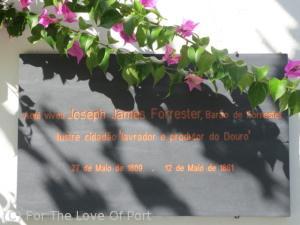 I first met Tony last autumn at Quinta de Covela, and we spoke briefly about his ideas for the Quinta da Boavista project. This trip we met at Pinhão and as Tony showed me over the property we spoke at greater length about his plans for Boavista specifically. I think João Paulo Martins’ comment above, that these are people with the will to do new things and do them well, is spot on. Tony is open and refreshingly candid and realistic, saying in effect, our firm cannot pretend to have the history or family ties that are the basis for so much of the marketing of wines in this region, but we can do a lot to research, restore and promote this historic property which is, in the words of another prominent winemaker, a microcosm of the Douro, and we can make superb wines from this quinta, this terroir.
I first met Tony last autumn at Quinta de Covela, and we spoke briefly about his ideas for the Quinta da Boavista project. This trip we met at Pinhão and as Tony showed me over the property we spoke at greater length about his plans for Boavista specifically. I think João Paulo Martins’ comment above, that these are people with the will to do new things and do them well, is spot on. Tony is open and refreshingly candid and realistic, saying in effect, our firm cannot pretend to have the history or family ties that are the basis for so much of the marketing of wines in this region, but we can do a lot to research, restore and promote this historic property which is, in the words of another prominent winemaker, a microcosm of the Douro, and we can make superb wines from this quinta, this terroir.
But do not mistake this openness for naiveté, nor imagine that Smith Lima are mere remote investors – there is no question Tony and his partner are extremely astute businessmen who are certainly approaching their winemaking ventures with the intention of creating both superb wines and a profitable business. Tony now makes his home in Baião in one of the extraordinary modern houses at Quinta de Covela, and is here in the Douro day in, day out, overseeing all the wine projects, getting to know his fellow wine producers in the region and working with the various regulatory bodies to get plans reviewed and approved, even sitting and waiting his turn at the regional wine authorities’ office to straighten out the paperwork to get the necessary approvals for his wines to be made in the Douro. And there is no doubt the marketing will be very well thought out, as witness the press on Covela and Smith Lima so far: not only is Tony leveraging his press contacts to promote the brands, properties, region and business, but he has hired Vitor Mendes, who has been extremely successful promoting another producer of Vinho Verde wines, to handle the international sales and distribution of all the Smith Lima wines. Vitor tells me he is becoming more involved in other aspects of the projects as well, which does not surprise me in the least, as Vitor’s extensive experience and trade contacts make him an invaluable resource for someone new to northern Portugal’s wine making regions.
Comparing my notes from last autumn and this trip, it is clear that Tony is incredibly open minded about the possibilities for Quinta da Boavista, and that as he learns more about the property and gains experience and understanding of the ways of the region and regional bodies, the possibilities are being winnowed, more specific ideas are forming, and the tactical plans are being made and put into action. It is fascinating to me to follow the story of Lima Smith’s progress.
So, for example, after careful consideration of every inch of vineyard, in 2013 they harvested from specific selected parcels at Quinta da Boavista and vinified about 20 different small lots of wine. Since they have not yet equipped their own adega the wines were made at Gonçalo Sousa Lopes' winery at Quinta da Faísca in Faváios, and the lots were so small they were all trodden in barrel! What the team are learning from tasting those wines is informing their plans for harvest and vinification this year, and their plans for the wines and the brand generally.
Right now, the intention is to focus on producing top red Douro DOC wines, true to the Lima Smith vision of creating wines that speak clearly of their terroir, but are of a quality to succeed internationally, and they plan to release their first wines, at the earliest, in 2015. They would like to make Port wines from Boavista, of course, but are approaching this thoughtfully: certainly they will not try to do a full range of Ports, but instead focus on just one or two styles, possibly tawnies and colheitas, possibly Vintage. As they make and taste the production over the coming seasons they will decide what would be the best use of the wines and refine their plans accordingly.
So, as the viticulture and wine making are in train, research and planning is going on on several more fronts. Branding is tricky, given that Boavista is a fairly common name here in Portugal, so determining the final brand and wine names requires considerable research and planning in order to avoid confusion in the marketplace.
The quinta has two adegas, one old, one new, both empty of winemaking equipment or even casks right now. The old adega has 6 stone lagares, ranging in size from the usual 10 to 12 thousand kilos capacity to a very small lagar, probably one-third or one-quarter that size. Underneath is the original armazen where the casks would have been kept and this too is now empty. The modern adega, built in 1977 for bulk production, is simply an open space two stories high. Tony is currently consulting with regional authorities and of course UNESCO to determine his options for modifying the building to suit their boutique wine making needs whilst still working within the strictures of the World Heritage program that protects the Douro landscape.
Finally, readers will be pleased to know there is a tourism project in the works. A full range of accomodation is already available in and around nearby Pinhão, the nearest being the superb Casa do Visconde de Chanceleiros. For this reason, Quinta da Boavista will be open as a day time attraction, not for overnight visits. Between the original winery and the casa do Barão is another building with two distinct spaces that will be restored and turned into reception and tasting rooms.
Visitors will have access to the winery and the vineyards – Tony remarked that hiking the quinta is brutal, but they could take visitors by jeep up to the top. Additionally, the quinta still has the stone quay on the river front, so he hopes to tie into some river-based tourism ventures. It may be possible to book the quinta for special events or dinners as well – a formula they already offer successfully at Quinta de Covela.
Above all, Tony is conscious of the history and significance to the region of the quinta’s association with Joseph James Forrester, and for this reason is determined "to make this a jewel” in the Douro. He emphasised that they have time to do this right, that the project is only just starting. First priority is of course the winemaking, so the immediate focus is on understanding the quinta’s production, creating the wines and the brand, and of course getting an on-site winery established. Then the focus can shift to the eno-tourism.
And yet clearly the tourism ideas are already simmering. Tony has a vision of the quinta as a place where visitors can learn about Baron Forrester, a place which would be a worthy homage to the man, his maps and his work in the Douro. He emphasised, with a laugh, that the tie-in will be dignified, no plastering Joseph’s face on the wine labels! As it happens both Marcelo and Tony are keenly interested in maps and have already begun to acquire some antique maps of Portugal for the quinta. Recently Tony met with Gaspar Martins Pereira who is one of the leading historians of the Douro and was instrumental in securing the UNESCO designation for the Alto Douro Vinhateiro, as well as creating the Museu do Douro in Régua, and no doubt that conversation has given Tony much to think over as he considers the possibilities for the development of Quinta da Boavista as a key Douro tourist destination.
The Vineyards and 2014 Viticultural Year at Quinta da Boavista
The quinta is 80 hectares of which about half are under vine. The present day Boavista encompasses the western side of the valley, which formerly was known as Quinta da Cachuxa (see detail of Forrester’s map). The section with the extraordinarily high walls is known as the Oratório, and is planted in old vines, as is the walled section on the eastern side known as Entre Caminhos – literally, between the roads. Altogether they have aproximately 4.5 hectares of old mixed vines, 4 hectares of white grapes, and the rest is red.
The grapes include well known Douro varieties such as Touriga Franca, Touriga Nacional, Tinta Cão, Tinta Roriz, Tinta Barroca and Sousão, but a few more unusual varieties as well, notably Alicante Bouschet, a French grape which is much used in the Alentejo and known for its very darkly coloured, structured and long lived wines, and Donzelinho Tinto, an old Douro variety which like Sousão is known for bringing acidity to blends. White varieties include Arinto, Códega do Larinho and Viosinho.
Francisco Dias is the estate manager responsible for Quinta da Boavista as well as Quinta das Tecedeiras. Previously he was with Quinta Nova, immediately to the west of Boavista, and earlier in his career was at Croft’s Quinta da Roêda and the Trás-os-Montes winery Valle Pradinhos. Francisco gave me the tour of the vineyards by jeep – which I can certainly recommend, though not for the faint hearted!
We headed first to the top most point of the quinta, on the western side overlooking the river, and scrambled through the ruins of what must once have been an impressive adega, with schist lagares (more often they were constructed of granite). We then came down the hillside and drove through the white grape parcels that stretch north from the Oratório back into the valley. In this location, lower on the hillside in the valley, the grapes will catch the early morning sun but be shaded in the late afternoon and evening during the hottest part of the day, so retaining freshness. Interestingly you can also see a very clear indication of the soil quality here: where the foliage is very light green the soil is rockiest, with the least organic matter in the soil; where the leaves are deeper green the soil is a bit richer. We then crossed over to the eastern side past the walled orchard and vegetable garden areas at the base of the valley and so back to the casa do Barão.
Francisco’s first year at Boavista has been a challenge. The heavy rains of late December and January brought down a part of one of the walls in the Oratório. The wall has been repaired but some vines were lost and will need to be re-planted this coming winter. In the photo you can see the gap in the vines on the lower terrace, and the slightly paler, greyer section of newly rebuilt wall behind that gap.
The 2014 season has regularly alternated between cool and hot spells, with periodic showers, so preventing or managing míldio has been a challenge, and on the 4th of July they had a hailstorm. It swept down across the quinta from the north, and mercifully did relatively little damage, perhaps affecting 10% of the crop. You can see clearly the tattered leaves, scarred vines and bruised grapes of hail damage, but all on the north sides of the vines – the south facing sides are fine, and some parts of the quinta were not affected significantly.
Clearly, the timing of harvest depends greatly on the weather in August (which so far has been relatively cool, following showers the last weekend of July) but right now they would expect to harvest the white grapes in the last week of August and the reds should be ready between the 8th and 15th of September.
Back at the house, discussing the vineyards with both Francisco and Tony, Tony said they are looking at pursuing an organic regime at least on the old stone terraced vineyards and have already begun experimenting in some plots. He said some of the terraces were ploughed last spring by horse, simply because no tractor could have passed through.
The challenge with organic viticulture is, of course, the sheer cost of labour: workers have to literally patrol the vineyards almost daily to monitor the health of the vines and identify and respond to any outbreaks or infestations, hopefully almost before they happen. That kind of vigilance is costly but where the micro-climate is favourable, for instance in parcels which are more open and airy and therefore naturally less prone to attack, organic viticulture can be cost-effective. On the other hand, Tony remarked that at Quinta de Covela – which is entirely managed on an organic regime – they have been remarkably free of míldio this year, though neighbours all around have had severe problems. In fact the dramatic difference has almost convinced their long-serving but skeptical caseiro at Covela that there might be something to this organic stuff after all…
In the vineyards, as with all other aspects of the project at Quinta da Boavista, Tony Smith and his team are monitoring, experimenting, learning and slowly evolving their plans to produce superior wines and create a unique visitor experience at this extraordinary quinta. We’re looking forward to monitoring the progress and tasting the wines of Quinta da Boavista, perhaps as early as next year.
Note: Quinta da Boavista does not yet have a dedicated website, but you can follow the news on this and all the Lima Smith ventures through the news feed on the Quinta de Covela site. Be sure to watch the video of Tony Smith showing Quinta da Boavista on SIC, the Portuguese news show. Though in Portuguese, it is worth watching for more views of the property.

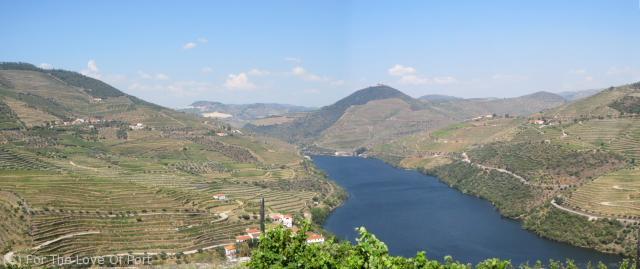

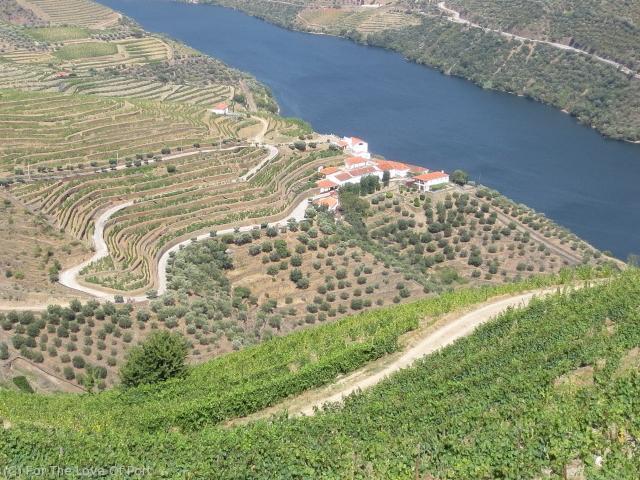
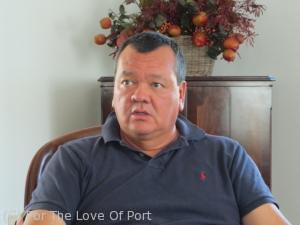
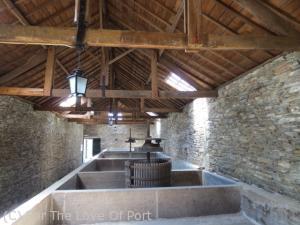
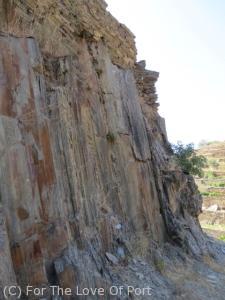
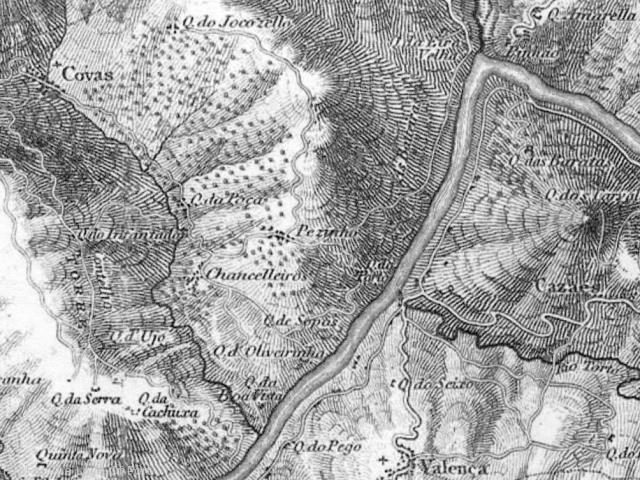
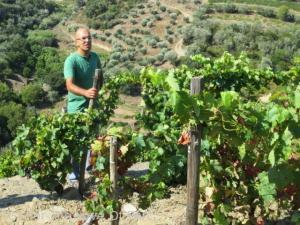
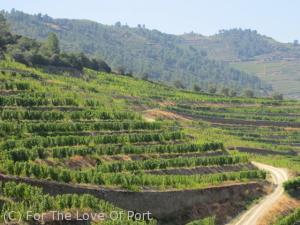
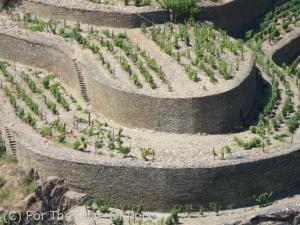

really enjoyed this read, excellent work!
Thanks Russ. It’s a fascinating project, one to watch.
Really well written and engaging with good historical background, full of interesting detail and spot on pictures and graphics; Thanks Cynthia for an excellent piece.
Thanks Phil – my pleasure!
Very informative. I had always thought that my Boa Vistas, under the Offley name, were single Quinta ports but from this article makes clear that they aren’t. Not that it really makes a difference, since it’s the quality in the bottle that counts.
Mahmoud.